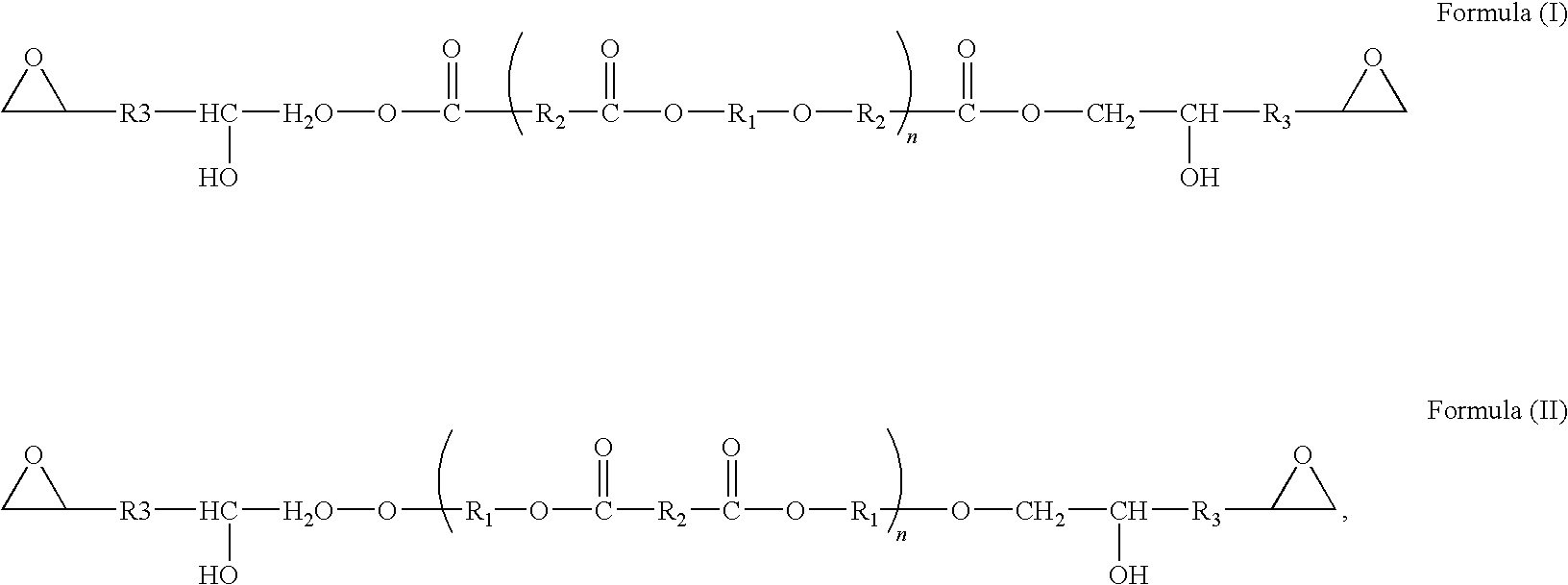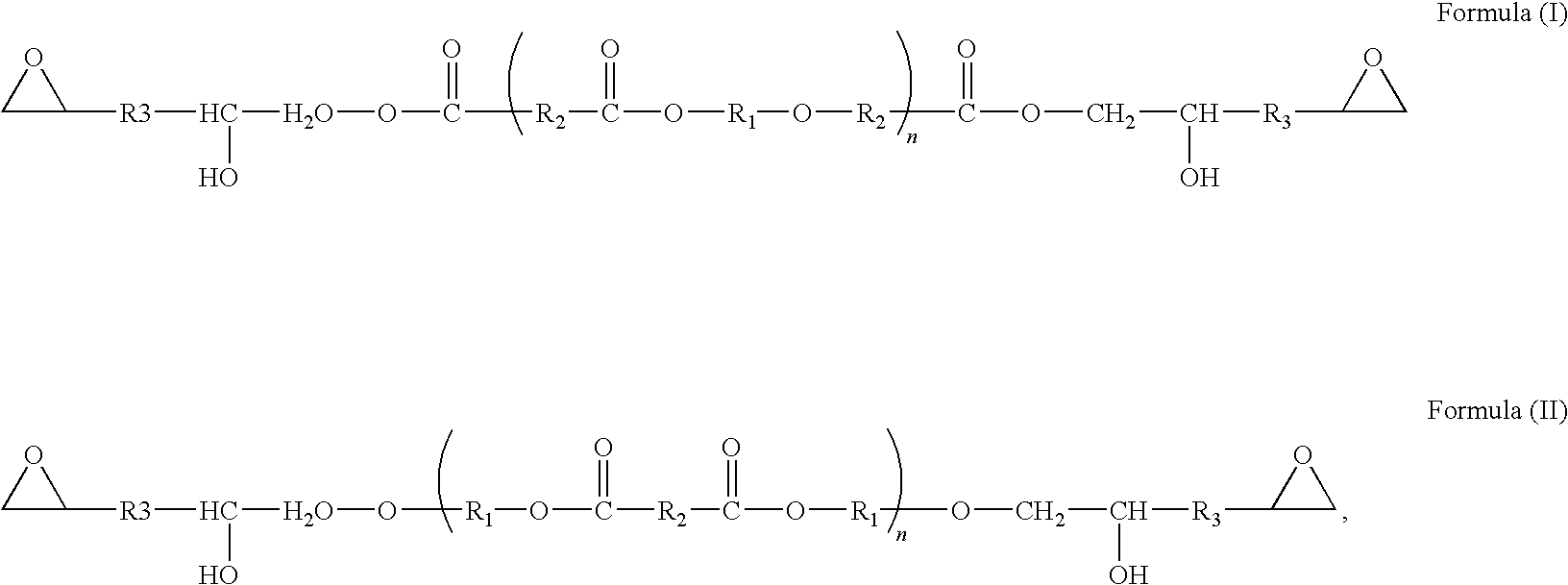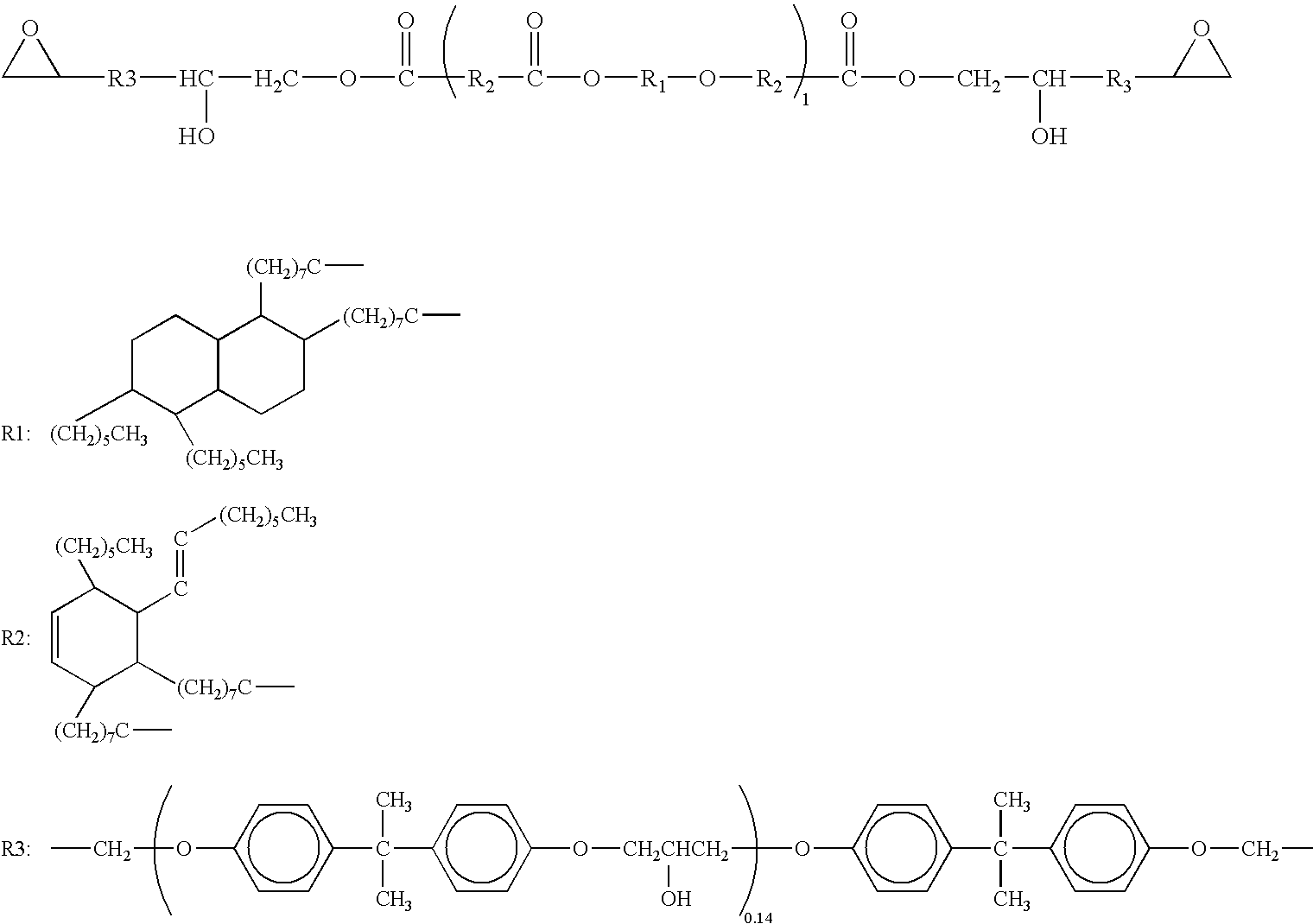Thermally curable solder resist composition
a technology of solder resist and composition, which is applied in the direction of photosensitive materials, instruments, photomechanical equipment, etc., can solve the problems of brittleness and inflexibility of solder masks, and insufficient flexibility of flexible printed circuit boards using the above mentioned materials, etc., to achieve sufficient heat resistance and sufficient flexibility
- Summary
- Abstract
- Description
- Claims
- Application Information
AI Technical Summary
Benefits of technology
Problems solved by technology
Method used
Image
Examples
example 1
[0024]50 grams of epoxy resin E-1 and 50 grams of epoxy resin (product model of Epikot 828, product of Shell Company) were dissolved in 22 grams of gamma-butyrolactone (GBL). After mixing uniformly, a mixture of Vanish V-1 was formed. The above epoxy resin E-1 had a weight average molecular weight of about 2412, and the structure thereof is shown as below:
[0025]Then, 5 grams of a curing agent of methyl hexahydrophthalic anhydride (MHHPA), 2 grams of a catalyst of 2,4-diamino-6-[2-(2-methyl-1-imidazolyl)ethyl]1,3,5-triazine (2MAZ-PW) (product of Shikoku International Corporation), 2 grams of a pigment green, 5 grams of a silica filler (product model of Aerosil-380, product of Degussa Company) and 1 gram of a deformer (product model of KS-66, product of Shin-Etsu Company) were mixed with the mixture of Vanish V-1 and ground uniformly by a triple-roll mill to form the thermally curable solder resist resin material of Example 1.
example 2
[0026]The fabrication method of Example 2 was the same as that of Example 1, except that the amount of epoxy resin E-1 added was 70 grams, the amount of epoxy resin Epikot 828 added was 30 grams, the amount of the curing agent MHHPA added was 5 grams, and the amount of a catalyst added of 2-ethyl-4-methyl-imidazole (2E4MI) (product of Shikoku International Corporation) was 2 grams. Then, the thermally curable solder resist resin material of Example 2 was obtained.
example 3
[0027]70 grams of epoxy resin E-2 and 30 grams of epoxy resin Epikot 828 were dissolved in 22 grams of gamma-butyrolactone (GBL). After mixing uniformly, a mixture of Vanish V-2 was formed. The epoxy resin E-2 had a weight average molecular weight of about 3984 and had a structure shown as below:
[0028]Then, 5 grams of the curing agent of methyl hexahydrophthalic anhydride (MHHPA), 2 grams of the catalyst of 2,4-diamino-6-[2-(2-methyl-1-imidazolyl)ethyl]1,3,5-triazine (2MAZ-PW), 2 grams of a pigment green, 5 grams of the silica filler Aerosil-380, and 1 gram of the deformer KS-66 were mixed with the mixture of Vanish V-2 and ground uniformly by a triple-roll mill to form the thermally curable solder resist resin material of Example 3.
PUM
| Property | Measurement | Unit |
|---|---|---|
| weight % | aaaaa | aaaaa |
| temperature | aaaaa | aaaaa |
| thickness | aaaaa | aaaaa |
Abstract
Description
Claims
Application Information
 Login to View More
Login to View More - R&D
- Intellectual Property
- Life Sciences
- Materials
- Tech Scout
- Unparalleled Data Quality
- Higher Quality Content
- 60% Fewer Hallucinations
Browse by: Latest US Patents, China's latest patents, Technical Efficacy Thesaurus, Application Domain, Technology Topic, Popular Technical Reports.
© 2025 PatSnap. All rights reserved.Legal|Privacy policy|Modern Slavery Act Transparency Statement|Sitemap|About US| Contact US: help@patsnap.com



